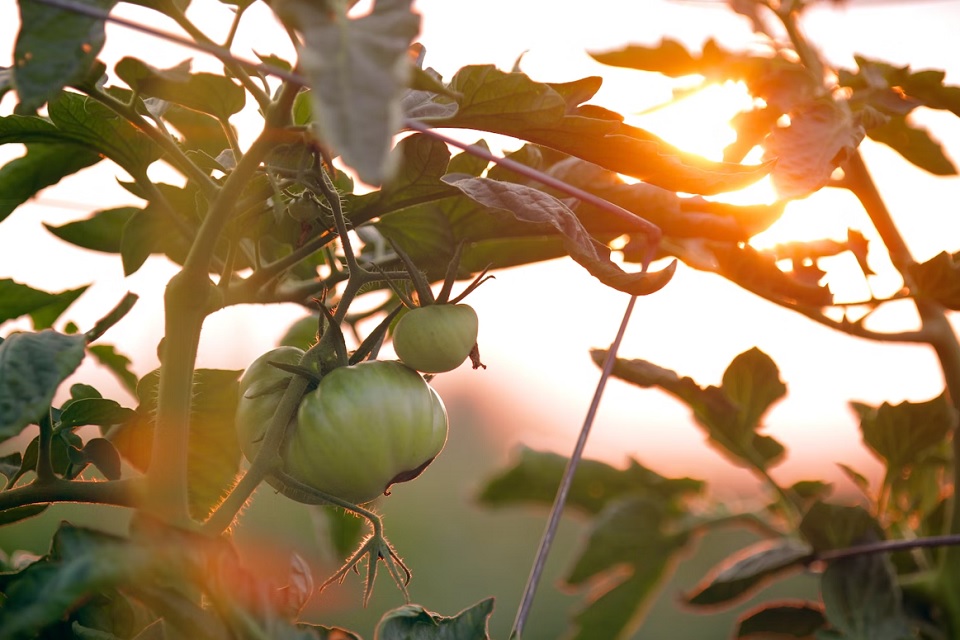The past few years have brought global pandemics, burgeoning international wars, volatile economic consequences, not to mention a whole host of other bizarre phenomena the world has never seen before. In this day and age, the advent of the apocalypse no longer seems like a far-fetched sci-fi plot but a real possibility. On the bright side, times like these give us ample motivation to return to our roots (no pun intended) as simple farmers.
Gardening is not only a savvy way to recoup some self-sufficiency in an uncertain world, but it’s also an excellent outlet. There’s nothing like the cool texture of fertile soil underneath the fingernails and the smell of lush green after a rainfall. Gardening relieves our stress, uplifts our spirits, and grounds us. To start your survival garden, you first need to know what kinds of crops will be most useful in a post-apocalyptic setting.
Table of Contents
Corn
Corn is perhaps the number one most versatile crop to have on hand. There are several corn varieties: sweet, popcorn, field, dent, and flint. The edible varieties can be eaten as corn on the cob, cooked as kernels to make other side dishes, or frozen and preserved for the winter. Corn can be eaten whole or ground into flour, masa, cornmeal, and grits. You’ll never tire of eating corn during the apocalypse, with so many ways to prepare it.
On the other hand, some varieties of corn are merely ornamental. Yet others have different uses altogether. In fact, corn is one of the most underrated crops of all time, especially in times of survival. Little do most people know that corn is an ingredient in all manner of non-edible products, from soaps and cosmetic powders to adhesives, rubber substitutes, insulation, candles, lubricants, etc. Corn is also crucial in the production of ethanol and is used as feed for farm animals. If anything will have serious bartering power in the post-doomsday world, it’s corn.
Beans
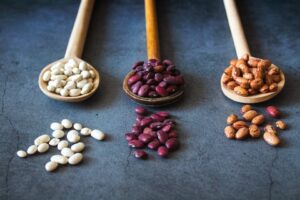
In a post-apocalyptic world, you’ll want to have a high-protein crop. Beans will have you covered there. This nutritionally dense superfood also contains high amounts of fiber and minerals like iron, potassium, and magnesium. Plus, they are a great candidate for canning.
Beans come in bush and pole varieties, so you can choose the variety best suited to your garden. Bush beans are easy to grow in containers, while pole beans grow best in a large outdoor plot with plenty of room for trellises.
Potatoes
Before the Great Famine, the Irish survived almost entirely on this crop. Andy Weir’s “The Martian” and its film adaptation by Ridley Scott demonstrated how a person could hypothetically survive exclusively on them. For centuries, they have been a staple in Northern and Eastern Europe, known for harsh climates. It’s no wonder potatoes are a must for any survival garden.
Potatoes take up very little space and, therefore, can yield a high amount per square foot. They are also nutritionally dense and can store well for long periods of time. Potatoes are versatile in cooking as well. From mashed and baked potatoes to au gratin and chips, you’ll never run out of delicious ways to consume them. The best part of all – you can regrow potatoes from your existing potatoes, providing you with a potentially unlimited, reliable food source.
Tomatoes
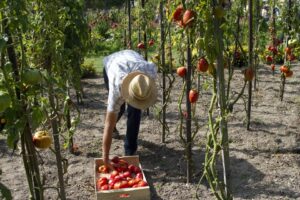
Who could ever get enough tomatoes? When sliced or quartered fresh off the vine, they’re a quintessential ingredient in salads and sandwiches. The unripe green fruits can be sliced and fried for a classic Southern snack. High in water content and electrolytes, tomatoes are a good crop to have on hand when water supplies are at risk.
Perhaps the most practical aspect of growing tomatoes is that they are easy to preserve. Paste tomatoes can be puréed or stewed into sauces of all kinds. Your neighbors will be envious of the savory smells of Italian pasta sauces and Indian curries coming from your home.
Cucumbers
When times get tough, it’s always a good idea to have crops that can act as substitutes for fresh water. Similar to tomatoes, cucumbers are also high in water content and electrolytes. Because of this, cucumbers are perfect for pickling. The pickling and canning process preserves your cucumbers, ensuring you have a food source for months to come.
Cabbage
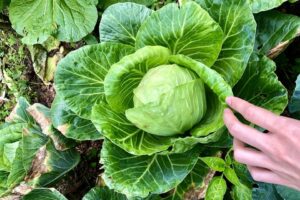
High in folate, vitamin K, vitamin C, and fiber, cabbage can keep you healthy year-round. Speaking of year-round, cabbage should immediately be on your list of survival greens if you live in a colder climate. Another cold-hardy vegetable originally cultivated by our friends in Northern and Eastern Europe, cabbage is known for surviving well through frosts and overwintering.
In terms of vegetables with the most versatility in the kitchen, cabbage has got to be one of the top contenders. Chop them up fresh for salads or cole slaw, or toss them into a stir fry. Blanche it in soup, or stew it like collard greens.
Spinach
Didn’t your mother ever tell you that you’ll grow big and strong if you eat all your spinach? That’s because spinach contains a wide variety of vitamins and minerals, the most prominent of which are iron, magnesium, and antioxidants. You’ll find a similar nutritional profile in many other dark leafy greens. However, spinach has made it onto our list of survival crops due to its suitability for being frozen. Thawed spinach may not be the best for making fresh salads, but you will at least have a dark leafy green to use in soups, stewed, casseroles, and many other dishes.
Herbs
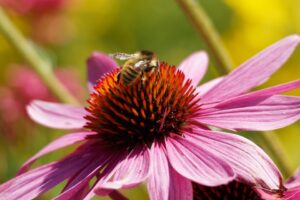
Lastly, herbs are our final plant recommendation for when you’re hoping to survive the end of the world. Not only do they help your food taste better, but herbs have a diverse range of medicinal uses. After all, who knows if OTC or prescription drugs will still be available?
Echinacea (and garlic, though not technically an herb) is great for immune support. Chamomile, valerian, and lavender can help with anxiety, stress, and sleep. St. John’s Wort is known for its anti-depressant qualities. Ginger and mint are excellent for treating motion sickness and nausea. Feverfew and turmeric (which is actually a root) are traditionally used to treat pain and inflammation.
These are just a few herbal suggestions, but there are many valuable choices out there. Do your research to determine which herbs possess medicinal properties that will be most useful for you.
Conclusion
The world may not always behave the way we might hope or expect, but one thing is for sure: gardening is always the answer. Perhaps having a backup food source for the apocalypse is a source of comfort. Or, perhaps, the act of gardening is inherently comforting. No matter the reason, survival gardening helps us sleep better at night and feel optimally energized with proper nutrition during the day. After all, you’re going to need your strength when the zombies take over.

